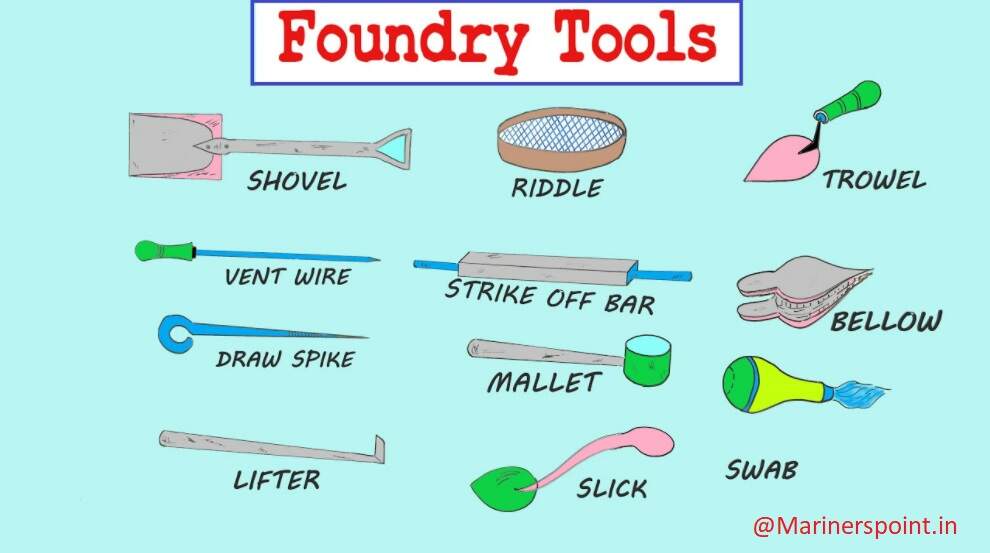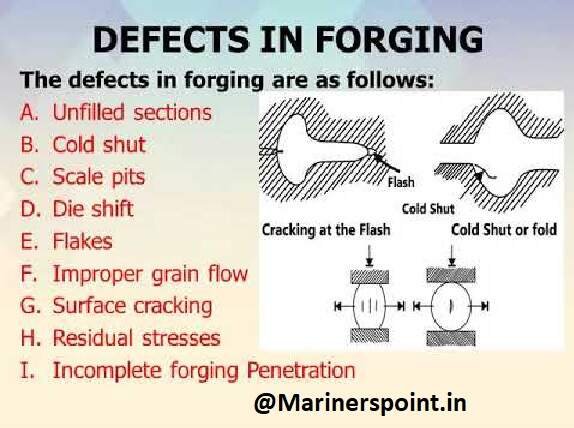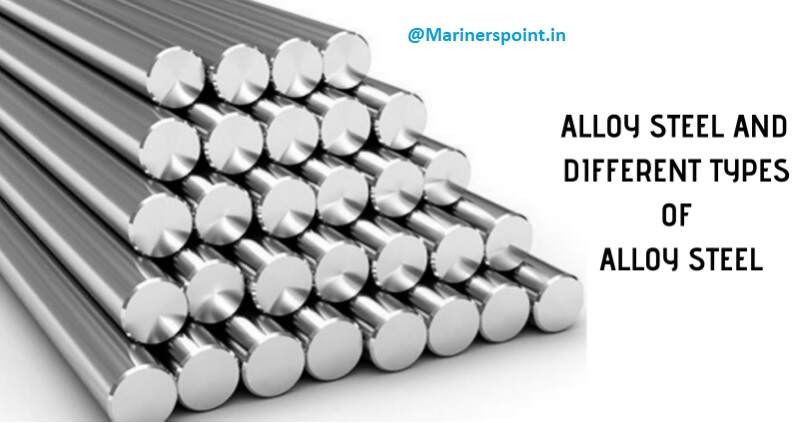In this article we are going to talk about Classification of steel. Different Types of steel are defined on different basis. Also we will learn about constituents of steel, what stainless steel contains and many more. Let’s have a look on the classification.
Classification of Steel
According to IS : 7598-1974 steels shall be classified as :
1. Unalloyed steels, commonly called plain carbon steels, and
2. Alloy steels
Unalloyed Steel or Plain Carbon Steel
The principal factors affecting the properties of plain carbon steel are the carbon content and the microstructure. Carbon is the principal determinant of many performance properties. It has a strengthening and hardening effect. At the same time, it lowers ductility, as evidenced by a decrease in elongation and reduction of area.
In addition, a rise in carbon content lowers machinability and decreases weldability. The amount of carbon present also affects physical properties and corrosion resistance. With an increase in carbon content, thermal and electrical conductivity decline, magnetic permeability decreases drastically, and corrosion resistance is lowered.
The microstructure is determined by the composition of steel, i.e., carbon manganese, silicon, phosphorus and Sulphur which are always present and residual elements including oxygen, hydrogen, and nitrogen, and by the final rolling, forging, or heat-treating operation. However, most of these types of steel are used without a final heat treatment and, the consequently the rolling and forging operations influence microstructure.
Carbon steel are the types of steel that are predominantly paralytic in the cast, rolled, or forged conditions. The constituents of hypo-eutectoid steels (steels containing from and below 0.87 per cent carbon) are therefore ferrite and pearlite and of the hypereutectoid steels (containing from and above 0.87 per cent carbon) cementite and pearlite.
Types of steel according to carbon content. On the basis of the carbon content plain carbon steels are commonly divided as :
1. Low carbon or mild steel- 0.05-0.30 per cent carbon
2. Medium carbon steel – 0.03-0.06 per cent carbon
3. High carbon steel 0.60-1.50 per cent carbon
4. Tool steel (high carbon) – 0.90-1.50 per cent carbon
It should be noted that carbon content of these four types of carbon steel are not rigid, and there may be a certain amount of overlapping from one type to next.
Types of Steel According to Deoxidation Practice
Steel are often identified as to the degree of deoxidation resulting during steel production :
1. Killed Steels
They are strongly deoxidized, and are characterized by high composition and property uniformity. All forging steels and , in general, all steels containing more than 0.25 per cent carbon are killed. The essential quality of killed steels is soundness (freedom from blow holes and segregation). When the steel is deoxidized sufficiently, there is no evolution of gas and the top surface of the ingot solidifies almost immediately. The symbol K stands for killed steel.
2. Semi-killed Steels or Balanced Steels
These types of steel can be seen as intermediate between those of killed and rimmed steels and have variable degree of uniformity. Structural steels containing 0.15 to 0.25 per cent carbon are generally semi-killed. In semi-killed steel the aim is to produce metal free from surface blowhole and pipe. The surface should have a sound skin of considerable thickness . Plates and structural products are normally made from semi killed steel. No symbol is used to denote semi-killed quality of steel which comprises 90 per cent of the total production of steel.
3. Rimmed Steels
In rimming, the steel is partially deoxidized. In rimmed Steel, the aim is to produce a clean surface in carbon content. A wide variety of deep drawing is made by the rimming process. Specially where ease of forming and surface finish are major considerations. These steels are therefore, ideas for rolling. Sheets and strips made from rimmed sheets have excellent surface- quality and cold-forming characteristic. The symbol R is used for rimmed steel.
Types of Steel Based on Chemical Composition
Steel is classified into four (04) basic types of steel based on its chemical composition:
- Carbon Steel
- Stainless steel
- Alloy steel
- Tool steel
1. Carbon Steel
Carbon steel is a steel with carbon content from about 0.05 up to 2.1 percent by weight.
Carbon steel is the most commonly used steel in industry, accounting for more than 90% of total steel production. Carbon steels are further classified into three groups based on their carbon content.
- Low Carbon Steel/Mild Steel
- Medium Carbon Steel
- High Carbon steel
2. Stainless Steel
Stainless steels are iron (Fe) alloys that contain about 12% and higher carbon.
Stainless steels are the types of steel containing 10.5 percent chromium (Minimum). Because of the formation of a very thin layer of Cr2O3 on its surface, stainless steel has corrosion resistance properties. This layer is also referred to as the passive layer. Increasing the amount of Chromium will improve the material’s corrosion resistance even more. In addition to Chromium, Nickel and Molybdenum are added to provide desired (or improved) properties. Carbon, Silicon, and Manganese are also present in varying amounts in stainless steel.
Classification of Stainless Steels
1. Ferritic Stainless Steels
2. Martensitic Stainless Steels
3. Austenitic Stainless Steels
4. Duplex Stainless Steels
5. Precipitation-Hardening (PH) Stainless Steels
1. Ferritic Stainless Steel :- Ferritic steels are iron-chromium alloys with body-centered cubic crystal structures (BCC). These are generally magnetic and cannot be hardened by heat treatment, but can be strengthened by cold working.
2. Austenitic Stainless Steel :- Austenitic steels are the most corrosion-resistant. It is non-magnetic and cannot be heated. Austenitic steels, in general, are very weldable.
3. Martensitic Stainless Steel :- Martensitic stainless steels are extremely tough and strong, but they are not as corrosion-resistant as the other two classes. These steels are machinable, magnetic, and heat treatable.
4. Duplex Stainless Steels :- Duplex stainless steel has a two-phase microstructure made up of ferritic and austenitic stainless steel grains (i.e. Ferrite + Austenite). Duplex steels have approximately twice the strength of austenitic or ferritic stainless steels.
5. Precipitation-Hardening (PH) Stainless Steels: Precipitation-Hardening (PH) Due to precipitation hardening, stainless steels have extremely high strength.
3. Alloy Steel
In alloy steel, varying proportions of alloying elements are used to achieve desired (improved) properties such as weldability, ductility, machinability, strength, hardenability, and corrosion resistance, among others. The following are some of the most common alloying elements and their effects:
Manganese – Increases strength and hardness while decreasing ductility and weldability.
Silicon is used as a deoxidizer in the steelmaking process.
Phosphorus increases steel strength and hardness while decreasing ductility and notch impact toughness.
Sulfur – Reduces ductility, notch impact toughness, and weldability. Found as sulfide inclusions.
Copper – enhanced corrosion resistance
Nickel improves the hardenability and impact strength of steels.
Molybdenum – Increases the hardenability and creep resistance of low-alloy steels.
4. Tool Steel
Tool steels have a high carbon content (0.5 percent to 1.5 percent ). Higher carbon content results in greater hardness and strength. These steels are mostly used to make tools and dies. Tool steel contains varying amounts of tungsten, cobalt, molybdenum, and vanadium to improve heat and wear resistance, as well as durability. This makes tool steels ideal for use as cutting and drilling tools.
Constituents of Steel
Steel is an iron-carbon alloy. It may contain trace amounts of silicon, phosphorus, sulfur, and oxygen.
Steel has a carbon content ranging from 0.08 to 1.5 percent. As a result, it is harder than wrought iron but less brittle than cast iron. Steel has a distinct combination of hardness, flexibility, and tensile strength. It is more durable and retains a sharper edge than softer wrought iron. At the same time, it is more resistant to shock and tension than brittle cast iron.
The properties of steel are dependent primarily on the carbon content and to a large extent upon silicon, manganese, Sulphur and phosphorus. Therefore, an understanding of the effect of each of the chemical elements on the properties of steel is necessary in the selection of steel for definite purposes. The Constituents of Steel are as follows :
Carbon
Carbon increases strength, elasticity (determined by yield point) and hardness, and lowers the ductility (characterized by elongation) and impact strength. An important fact is that above 0.3 per cent carbon , the steel can be hardened by heating and quenching in water or oil.
Silicon
Silicon in the finished steel usually ranges from 0.05 to 0.30 per cent. Silicon is put in carbon steels to prevent them from becoming porous. It acts as a very good deoxidiser and removes the gases and oxides, prevents blowholes, and thereby makes the steel tougher and harder.
Manganese
Manganese also serves as a valuable deoxidizing and purifying agent. Manganese also combines with sulphur and thereby decreases the harmful effect of this element remaining in the steel. When uses in ordinary low carbon steels, manganese makes the metal ductile and of good bending qualities. The manganese content of carbon steel is usually less than 1.00 per cent and commonly ranges from 0.30 to 1.00 per cent.
Sulphur
Sulphur occurs in steel either as iron sulphide or as manganese sulphide. Tron sulphide, because of its low melting point, produces redshortness, i.e., increased brittleness at elevated temperatures, whilst manganese sulphide does not affect so much. Therefore, manganese sulphide is less objectionable in steel than iron sulphide. The presence of a substantial amount of sulphur (sulphur inclusion) in steel unfavorably affects other properties of steel, e.g., tensile strength, yield point, fatigue limit, etc., and decreases its corrosion resistance.
Phosphorus
Phosphorus imparts cold-shortness, i.e., high brittleness at normal and especially at low temperatures. It increases the tensile strength but at the same type reduces the impact strength and the ductility. At a phosphorus content of slightly over 0.2 per cent the impact strength has a zero value. The embrittlement effect of phosphorus increases with an increase in the carbon content of Steel. The sum of carbon and phosphorus usually does not exceed 0.25 percent. Tool steels of the best quality do not contain more than 0.02 percent.
The content of Sulphur and phosphorus is strictly limited because of their harmful effect on the quality of the steel.
What does Stainless Steel Contains ?
Stainless steels contains at least 10.5% chromium, less than 1.2% carbon and other alloying elements. Stainless steels are corrosion resistance and its mechanical properties can be further improved by addition of other elements, such as nickel, molybdenum, titanium, niobium, manganese, etc.
What does stainless steel contain 10% of?
Stainless steels are the types of steel containing 10.5 percent Chromium (Minimum).
Does stainless steel contain copper?
Copper is commonly found as a residual element in stainless steel. It is, however, added to a few alloys to provide precipitation hardening qualities or to improve corrosion resistance, especially in seawater and sulphuric acid conditions.
What is the strongest type of steel?
Tungsten has the highest tensile strength of any pure metal, with a tensile strength of up to 500,000 pounds per square inch at room temperature. It possesses the maximum tensile strength, even at temperatures above 1,500°C. Tungsten metal, on the other hand, is brittle, making it less useful in its pure form.
Which grade steel is best?
304 stainless steel is the most widely used type of stainless steel in the world because of its superior corrosion resistance and value . 304 is able to withstand most of the oxidising acids. Because of its durability, 304 is easy to disinfect, making it excellent for kitchen and culinary applications.
We have tried to cover all the details about Steels which includes different types of steel, Constituents of steels and some of frequently asked questions like, what stainless steel contains etc. Hope you liked this article. Please give your feedback in the comments below.
Check Out Other Important Topics
Cast Iron – Properties, Types & Uses
Recovery Recrystallization and Grain Growth – Working Process
Constrained Motion – Definition, Types, Examples, Images
| IC Engine | Important PDFs | Boilers | Synergy Maritime Exam | Naval Arch | MEO Class 4 |
| Interview Questions | Difference Between | Types of Pumps | Auxiliary Machines | Types of Valves | Home |





